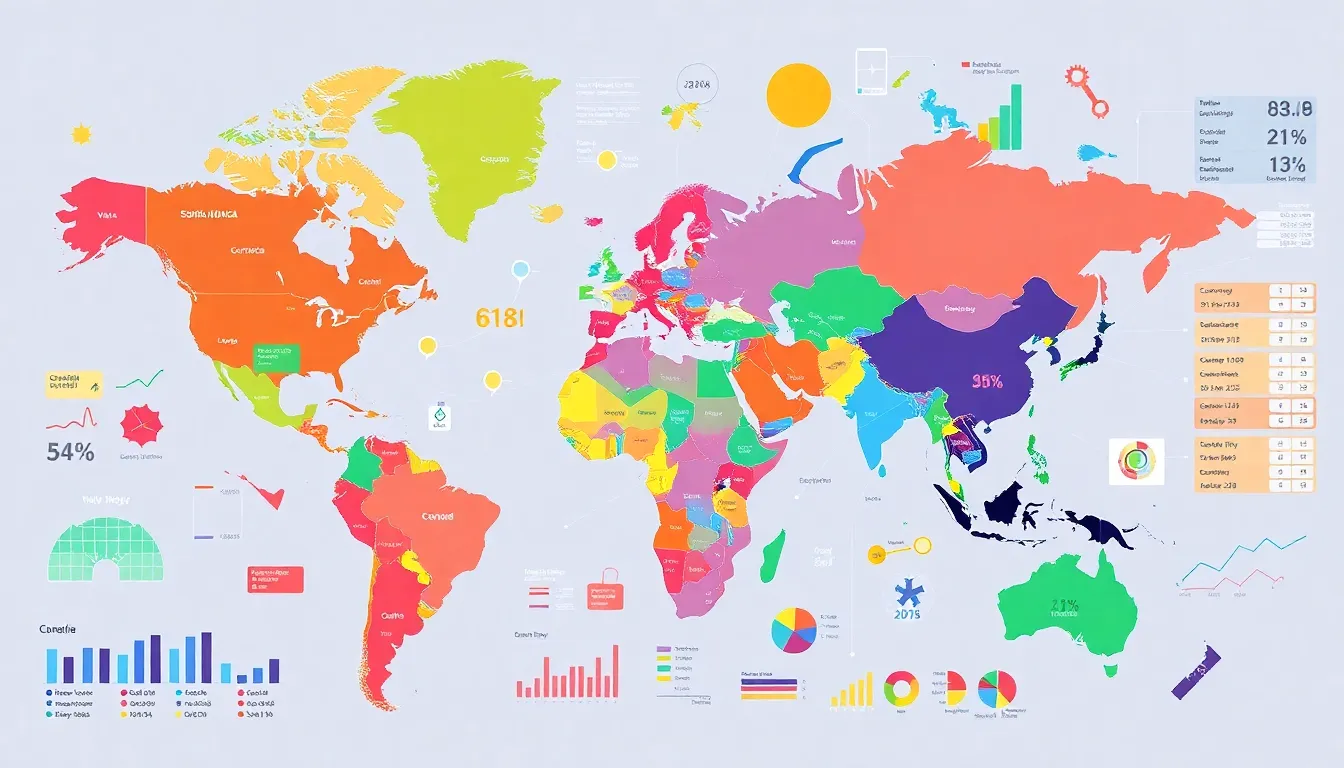Table of Contents
ToggleIn a world that’s more connected than ever, comparing countries might just be the new favorite pastime. Whether you’re planning a vacation, considering a move, or just curious about how your nation stacks up against the competition, a country comparison tool is your trusty sidekick. With just a few clicks, you can dive into a treasure trove of data, from economic stats to quality of life indicators, all while avoiding the headache of sifting through endless spreadsheets.
Imagine being able to weigh the pros and cons of living in a bustling metropolis versus a quiet countryside without ever leaving your couch. This tool doesn’t just make comparisons; it serves up insights like a well-prepared feast. So buckle up and get ready to explore the globe, one country at a time—because who knew geography could be this much fun?
Understanding Country Comparison Tools
Country comparison tools enable users to analyze and visualize essential data across different nations. By simplifying access to critical statistics, these tools help users make informed decisions.
What Is a Country Comparison Tool?
A country comparison tool aggregates various metrics such as economic data, quality of life indicators, and social statistics. Users select countries to compare side-by-side, facilitating an easy assessment of global differences. This comparison can include factors like GDP, literacy rates, healthcare quality, and environmental sustainability. Ultimately, it serves as a resource for understanding diverse cultures and economies.
Benefits of Using a Country Comparison Tool
Using a country comparison tool offers numerous advantages. These tools streamline the evaluation of essential data points, helping users quickly identify trends and disparities. Engaging visualizations make the information more accessible, turning complex statistics into easy-to-understand graphics. Users can enhance their travel planning or relocation decisions based on accurate, real-time information. Furthermore, educators and students find these tools valuable for research, promoting global awareness and understanding.
Features of Country Comparison Tools

Country comparison tools offer diverse features that enhance the analysis of global data. Users benefit from streamlined access to vital information.
Data Visualization Options
Interactive charts and graphs display information clearly. Maps highlight geographical differences, making comparisons visually engaging. Color-coded indicators help users quickly grasp disparities in various metrics. Customizable views allow individuals to select specific data for personalized analysis. Such options foster deeper understanding of complex statistics and facilitate better decision-making.
Comparative Metrics Available
Economic statistics represent one of the primary metrics available. GDP, unemployment rates, and inflation data provide insight into a country’s economic health. Quality of life indicators include literacy rates, life expectancy, and healthcare access. Environmental sustainability metrics highlight pollution levels, renewable energy usage, and biodiversity. Users access a broad range of metrics to examine the multifaceted nature of each country effectively.
Popular Country Comparison Tools
Various tools enable users to compare countries effectively, offering insights into key metrics. These platforms streamline decision-making by aggregating essential data across different nations.
Overview of Top Tools
Several prominent country comparison tools stand out in the market. Numbeo focuses on quality of life indicators, providing users with information on cost of living and crime rates. CountryReports offers comprehensive reports on over 200 countries, covering history, culture, and statistics. World Bank Data delivers authoritative economic data, allowing users to analyze GDP and development indicators. Veritas provides interactive maps that visually represent various metrics, making geographical comparisons clearer.
Key Features of Each Tool
Each tool includes unique features that enhance user experience. Numbeo includes user-contributed data for localized insights, while CountryReports features extensive historical context for a deeper understanding. World Bank Data offers downloadable datasets for comprehensive analysis, catering to research and academic needs. Veritas stands out with its customizable visualizations, enabling personalized comparisons. These distinct features facilitate informed exploration of diverse global aspects.
How to Choose the Right Country Comparison Tool
Choosing the right country comparison tool requires careful evaluation. Users must understand their needs and the specific metrics that matter most to them.
Factors to Consider
Comparison tools vary significantly in features and usability. Users should look for reliable data sources that provide up-to-date information. Customization options enhance user experience, allowing tailored analyses. Visual displays like interactive charts and maps improve comprehension and engagement. A user-friendly interface encourages more effective exploration of data. It’s essential to consider the breadth of metrics offered, from economic indicators to quality of life measures. Finally, check for community engagement features where users can add or verify data, enriching overall tool reliability.
Common Use Cases
Different scenarios drive the use of country comparison tools. Travelers frequently compare cost of living and safety ratings when planning trips. Relocators assess quality of life factors, including healthcare and education systems, to make informed decisions. Students often utilize these tools in research projects, gaining insights into global issues. Businesses analyze economic statistics like GDP and job markets for expansion opportunities. Policymakers require comparative data to evaluate environmental metrics, driving sustainable development initiatives. Each of these use cases showcases the diverse applicability of country comparison tools in real-world situations.
Conclusion
Country comparison tools have become essential for anyone looking to make informed decisions about travel relocation or research. By providing easy access to a wealth of data on economic indicators quality of life and environmental sustainability these tools empower users to understand global differences at a glance.
With features like interactive visualizations and customizable metrics they cater to a wide range of needs from travelers to policymakers. As the world becomes increasingly interconnected these tools will continue to play a vital role in promoting global awareness and informed decision-making. Embracing these resources can lead to a deeper understanding of diverse cultures and economies.







